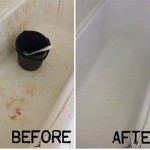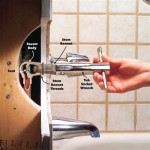Essential Aspects of Rough-In Plumbing for Bathtub Drain In Slab
Installing a bathtub in a concrete slab requires careful planning and execution, particularly regarding the drain plumbing. Rough-in plumbing, which establishes the drain connections before the tub is installed, is crucial to ensure proper drainage and prevent future problems.
The drain assembly for a slab-installed bathtub consists of three main components: the bathtub drain, the P-trap, and the tailpiece. The bathtub drain connects to the drain hole in the tub, the P-trap prevents sewer gases from entering the bathroom, and the tailpiece connects the P-trap to the main drain line.
The first step in rough-in plumbing for a bathtub drain in slab is to determine the location of the drain hole in the tub. This information can be found in the bathtub manufacturer's specifications. Once the drain hole location is determined, mark it on the subfloor and drill a hole of the appropriate size.
Next, install the bathtub drain assembly. The drain assembly should be inserted into the drain hole from below the subfloor and secured in place with a plumber's putty or gasket. The P-trap should then be connected to the bathtub drain using a slip nut or other appropriate fitting.
The tailpiece, which connects the P-trap to the main drain line, should be cut to the appropriate length and secured using a compression fitting or other suitable method. Ensure that the tailpiece is properly aligned to allow for unrestricted flow of water.
Once the drain assembly is installed, test the system by running water into the bathtub. Check for any leaks or incorrect drainage. If there are any issues, adjust the fittings or connections as necessary until the system is operating correctly.
Finally, protect the drain assembly by wrapping it with insulating tape or other protective material. This will prevent damage to the drain during the concrete pouring process and ensure its longevity.
By following these steps, you can ensure that the rough-in plumbing for your bathtub drain in slab is done correctly, allowing for proper drainage and preventing future problems. Remember to always consult with a qualified plumber for any plumbing-related work to ensure compliance with building codes and safety standards.

Plumbing Rough In Slab Diagrams Diagram Shower Drain Under Sink

Plumbing Rough In For Slab Inspections Internachi Forum

Plumbing In A Concrete Slab

Understanding Bath Traps

Plumbing In A Concrete Slab

I Am Installing A Fiberglass Tub Shower On Concrete Slab In Garage Along With Lavy And Toilet The Same Wall

Plumbing Rough In For Slab Inspections Internachi Forum

Under Slab Plumbing Rough In Bakwas Enterprises

Rough In Plumbing Before Concrete Slab Pole Barn House Ep 4

Slab Under Plumbing Solutions Llc
Related Posts








